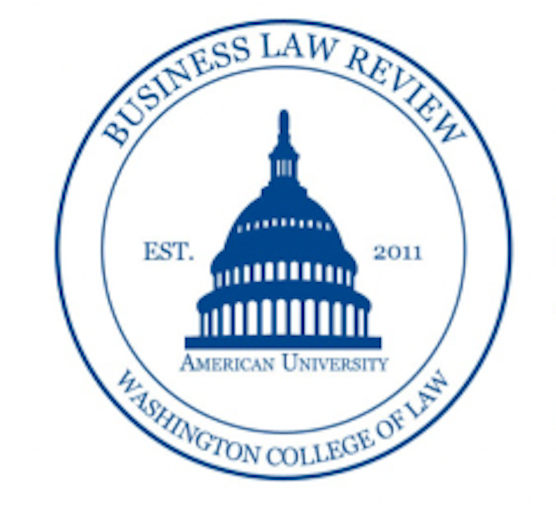By Ronalda Smith
On January 1, 2017, the New York State Department of Financial Services implemented a new anti-money laundering law.[1] This new law requires financial institutions to validate their anti-money laundering compliance programs.[2] Financial institutions that are registered or do business in New York are now also required to have the chief financial officer sign a document stating their programs comply with federal law.[3] Any institution that does not comply with the new law or that chooses to false file could be criminally penalized.[4]
There is an ongoing discussion of where the liability should lie within these institutions. A compliance officer is tasked with making sure that a company or organization conducts its business practices in accordance with national and international regulations within its industry.[5] The compliance officer must also educate the employees of the company of the expected standards and create practices within the company to ensure compliance.[6] The chief compliance offer (“CCO”) has “sufficient seniority within the firm” as to where they can effectively compel others in the organization to comply with the industry’s regulations.[7] This person is already tasked with the duty of being a people person that is well rounded, and well-informed, but with the implementation of the new law comes even more responsibility.
Under the new law, institutions are expected to review their compliance programs, such as their transaction monitoring and filtering programs, to ensure they are capable of detecting unlawful or suspicious fund transfers.[8] In addition, the institutions must “adopt an annual board resolution or senior officer compliance finding to certify compliance with the [new] regulation” and retain such records for five years.[9] Banks and other financial institutions are expected to report their compliance before April 2018.[10] The law has added additional personal liability to compliance officers that are expected to sign off on the validity of the institution’s anti-money laundering compliance programs.[11] A “senior officer” may also certify the bank’s records.[12]
Will the inauguration of President Trump have an impact on the law? It is hard to say how the new administration will view the new anti-money laundering law in the grand scheme of its plans. Recently, the President ordered that all new business regulations be capped in his promise to ease some burdens in business.[13] However, it has been said that banks should expect President Trump to stick with the tough stance of the Obama administration.[14]
So, what does this mean for New York financial institutions and their compliance officers? With the new law, compliance officers will be forced to face personal liability for compliance issues within their companies. It is likely that this added responsibility will affect the number of professionals seeking compliance employment positions. Will young professionals in New York be willing to risk their careers and possibly all they have to one-day aim for a CCO or senior officer position? Some may feel that this law is well overdue as there are a lot of problems with data and risk management within big banks.[15] However, it is a lot to ask of someone to be held criminally and civilly accountable for the actions of a department, let alone the entire company. It will be interesting to see whether or not there are objections from senior compliance professionals or if there will be companies that blatantly fail to comply with this new law. How will this new law be enforced? Where should the liability lie, within the organization or an individual?
[1] Ben Dipietro, The Morning Risk Report: New York Law Adds Teeth to Federal AML Oversight, The Wall Street Journal, (Jan. 24, 2017), https://blogs.wsj.com/riskandcompliance/2017/01/24/the-morning-risk-report-new-york-law-adds-teeth-to-federal-aml-oversight/.
[2] Id.
[3] Id.
[4] Id.
[5] The Role of a Compliance Officer, Robert Walters, https://www.robertwalters-usa.com/career-advice/the-role-of-a-compliance-officer.html (last visited Jan. 29, 2017).
[6] Id.
[7] Julie DiMauro, The Sustainability of the Compliance Officer’s Role In Financial Services, Thomson Reuters, (Jul. 7, 2015), https://blogs.thomsonreuters.com/answerson/compliance-officer-role-financial-services/.
[8] Patty Tehrani, New York DFS Issues Tough Anti-Money Laundering Regulation: An Overview of NY’s Latest AML Law, Corporate Compliance Insights, (Oct. 4, 2016), https://www.corporatecomplianceinsights.com/new-york-dfs-issues-tough-anti-money-laundering-regulation/.
[9] Id.
[10] Id.
[11] See Dipietro.
[12] Joseph Rillotta and Emily Broach, New York Banks Face New Anti-Money Laundering Compliance Requirements, Effective January 1, Dinker Biddle & Reath LLP, (Dec. 6, 2016), https://www.natlawreview.com/article/new-york-banks-face-new-anti-money-laundering-compliance-requirements-effective.
[13] Ben McLannahan, US Banks Warn Trump Will Stick With Tough Money Laundering Stance, Financial Times, (Feb. 1, 2017), https://www.ft.com/content/fdf88c84-e89a-11e6-893c-082c54a7f539.
[14] Id.
[15] See generally Dipietro.



